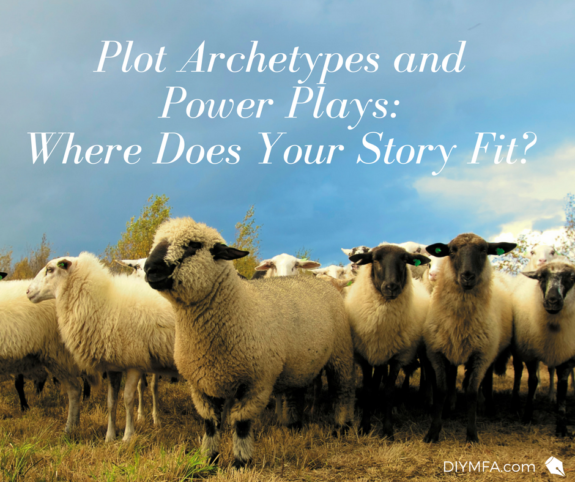There are lots of different opinions out there about plot archetypes and how you can represent just about any story with one of a few labels. For instance, John Gardner once said that there are only two plots in all of literature: “you go on a journey”, or “a stranger comes to town.” While most stories do boil down to one of these two scenarios, what do you do when a story fits both?
Example: Take the story The Wizard of Oz in which Dorothy is swept up by a tornado and goes on a magical journey through the land of Oz. Sounds like the first of Gardner’s categories, right? But wait, if we look at the story from the other side, Dorothy is like a stranger coming into Oz and shaking things up. A stranger comes to town if I ever saw one. So which is it?
This is why when I think of plot archetypes, I think of it in terms of power:
- The protagonist confronts a person or entity with more power.
- The protagonist confronts a person or entity of equal power.
- The protagonist confronts him or herself.
Wait, why don’t we look at stories where the protagonist confronts a person/entity of lesser power? Seems like the odds are always stacked against our poor protagonist. The answer is simple. Think about it: if the protagonist confronts someone of lesser power then there’s no conflict, no tension, no reason to keep us reading the story. Not to mention that the protagonist risks coming across as a bully and readers don’t usually like to root for bullies.
Notice also that when you’re looking at power dynamics between your protagonist and other characters/entities, you can have either a journey story or a stranger-comes-to-town story (also known as “fish out of water”). The latter works especially well in terms of power dynamics because when you have a main character thrown into a strange environment, he or she is immediately vulnerable. (Remember: vulnerable is good because it means conflict and tension.)
Protagonist confronts a character/entity with more power.
There are a few different ways of looking at underdog stories but in all of them, the core of the story’s conflict lies in the interaction or relationship between a powerful character/entity and an underdog protagonist. Readers root for the underdog to end up achieving some sort of power.
- Cinderella Story: In this “Rags-to-Riches” narrative, a character who is often overlooked or under-appreciated, suddenly does something to gain notice and respect from a more powerful character.
- David and Goliath: Here, the underdog is faced with a character much more powerful than he, but because of his innate underdog-awesomeness, the protagonist manages to vanquish the more powerful character.
- Come-Back Story: The protagonist suffers some set-back but turns around and is able to achieve a position of power. Revenge stories fall under this category; in this case, the character achieves power by exacting revenge.
- “Golem” Story: A powerful character “creates” a less-powerful one, intending to use him or her. Eventually, the “creation” develops enough power to cause trouble. Think Frankenstein or Pygmalion.
- Knight in Shining Armor Story: There is an antagonist—a great force/opponent or a big problem—and the protagonist is determined to stop it. Often the protagonist is not a powerful knight but develops the skills to save the world throughout the story. Many dystopian stories fit this category.
- Star-Crossed Lovers: Two characters fall in love but some huge external obstacle stands in the way of their being together.
Protagonist confronts another character/entity of equal power.
- Long-Lost Twin: Two characters–can be friends or even enemies–discover a hidden kinship or likeness between them. The long-lost twin narrative also includes tropes like “switched at birth” or “switching places” stories where two opposite characters discover what they have in common when they’re forced to walk in each others’ shoes.
- Boy Hates Girl: We often see this formula in romance stories (boy meets girl; boy loses girl; boy gets girl). Characters who start off hating each other eventually come to realize their similarities and end up together. Think: When Harry Met Sally.
Protagonist confronts self.
The protagonist has some great inner conflict that must be resolved. Often this narrative is combined with one or more of the others. Why? Because a story that’s all in the protagonist’s head is often b-o-r-i-n-g. Usually you have plot threads from all three categories working together, with the protagonist’s inner journey at the center of the story.
Ultimately the point of this exercise isn’t to box up plots into neat little categories. What you want to do is get to the heart of the conflict and how that power-play works in your story. Then think about how you can shape that conflict to ramp up the tension, because that’s what will keep the reader hooked. This isn’t about sorting and categorizing, it’s about gaining a deeper understanding of how stories work, so you can tell a great one.







